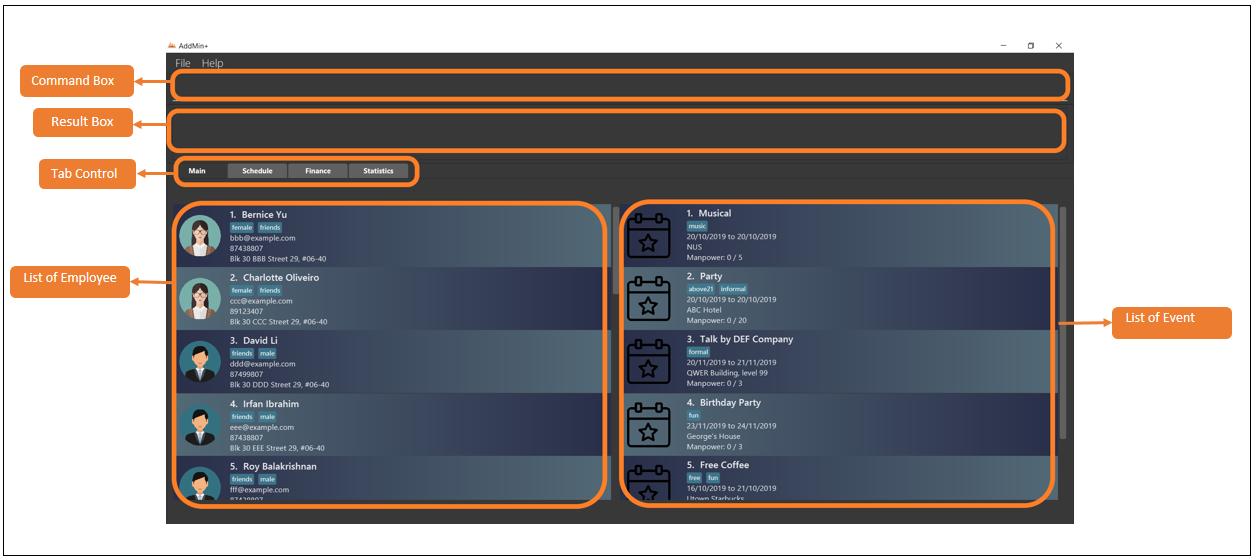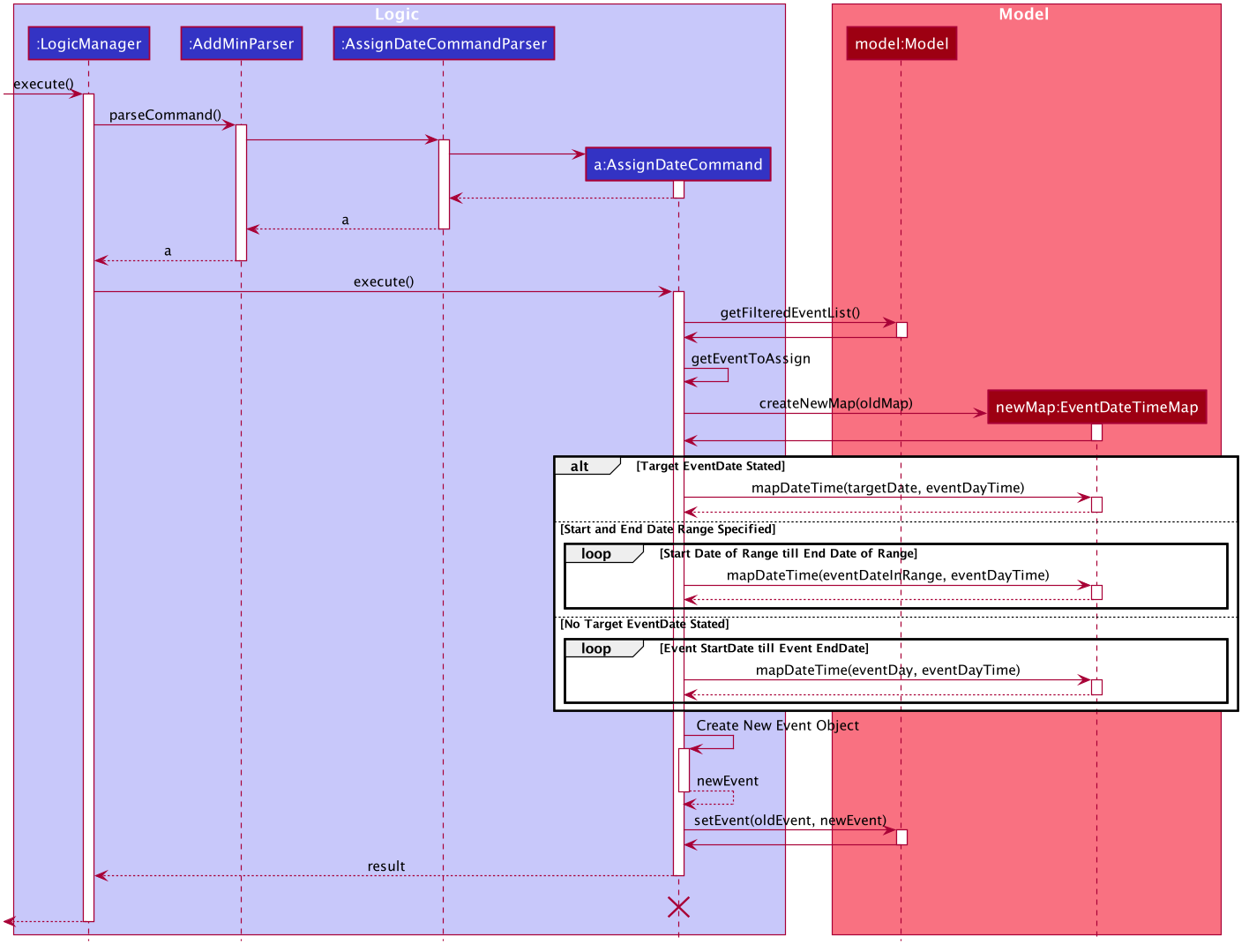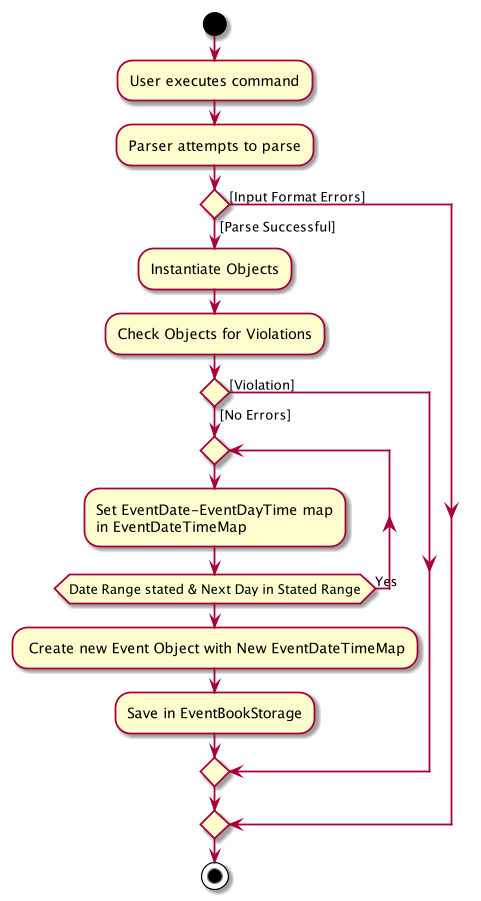Overview of Project
AddMin+ is student developed application under the National University of Singapore’s CS2103T Software Engineering Module. In this module, we were organized to a team of 5 members for the software engineering project. The project requires us to enhance a basic command line interface desktop application, the AddressBook - Level 3 developed by the se-edu team for the the purpose of teaching Software Engineering principles.
About AddMin+, the All-in-One Administration App

AddMin+ is an all-in-one administration desktop application, that is specially designed for any events management start-up company with limited manpower and resources. These companies would usually only be able to afford to hire one admin staff to handle both the management of events and employees and this can be tough. The Admin+ Team understands the struggles that start-ups faces on a daily basis, and we are here to help!
AddMin+ is specially designed to ease the workload of the admin and allow him/her to effectively handle the administrative tasks of the company by providing the following functions: manpower management, event creation and deletion, editing of event details after creation, manual and automatic manpower allocation for events and providing an overview of all the data via statistics. The purpose of this user guide is show the user how they can use our app to carry out their administrative tasks efficiently and also answer any questions they may have while using our app.
-
AddMin+ is specially designed to help ease the workload by offering a one-stop platform to help deal with the various administrative needs of the company.
-
AddMin+ uses a Command Line Interface(CLI) and displays the results through a Graphical User Interface(GUI) to assist the employee in their specific needs.
My Roles & Responsibilities
As Team Leader, I took charge of the overall direction of the project, working and communicating closely with all my team members to ensure that the project is well-maintained and coordinated. In addition, I defined, assigned and tracked project tasks for the group, maximizing use of Github’s Issue Tracker and Project Board for task and milestone managememt. By frequenting providing feedback, either through Pull-Request Reviews or direct, verbal communication, I also helped to enforce high code quality and software engineering standards.
Introduction to Application Components
This is a short section that aims to get the reader familiar and up to speed with the components in the AddMin+ app. AddMin+ contains two main entities: the Event and Employee components. Besides Create, Read, Update, Delete (CRUD) commands on both entities, AddMin+ is capable of manpower allocation, scheduling, salary management and statistics generation which requires interaction with both the Event and Employee objects through the use of the Date & Time mapping that sets the schedule and duration of an Event.
Summary of contributions
-
Major enhancement: Implemented the
EventComponent, and most significantly the Event Date-Time Mapping and its ancillaries-
What it does: The
EventComponent features basic Create, Read, Update and Delete (CRUD) functionality, extended with the ability to store a list ofEmployeesin a Manpower List and a Date-Time Map that stores the schedule of theEvent. The Date-Time Mapping feature enables the user to accurately and precisely map a schedule of an existingEvent, broken down into its individual dates and time period. -
Justification: The
EventComponent is critical for our application’s functionality as its target audience is Administrative Staff in small companies managing events. TheEventComponent provides full flexibility for the user to manage event details through its CRUD functionality. Additionally, having a known date-time schedule of eachEventsupports the ability for administrative matters such as manpower allocation and schedule generation, ensuring that the employees are allocated to events efficiently without overlaps/conflicts in schedule. -
Highlights: This Date-Time Mapping feature is significant and is required for two other significant features of our application, manpower allocation and scheduling. To enhance the user experience and achieve our goal of simplifying tedious administrative work, I extended the functionality of the command to enable quick assignment of dates and time by stating a date range, instead of just a single date to map. Overall, the implementation was challenging as I also needed to consider how edits to the start/end dates of the
Eventmay break the manpower allocation or assigned date-time mapping and deal with them accordingly.
-
-
Minor enhancement: Implemented the Fetch Employee Command
-
What it does: Shows the schedule of a single
Employee, which displays a list of dates which itself contains a list ofEventthat theEmployeeis allocated to. -
Justification: It would be useful for either the adminstrative staff or the employee to view the current schedule of an
Employeefor tracking and logging purposes.
-
-
Code contributed: [tp Code Dashboard]
-
Functional Code Contributed:
-
Event: [
Event,EventDate,EventDateTimeMap,EventDayTime] -
Command: [
FetchEmployee,AssignDate,DeleteDateMapping,ClearDateMapping,AddEvent,EditEvent] -
ParserUtil [ParserUtil]
-
parseAnyDate(),parseEventDate(),parseTimePeriod(),parseEventDateTimeMap()
-
-
Parser: [
AssignDate,DeleteDateMapping,ClearDateMapping,AddEvent,EditEvent] -
Processor: [EmployeeEvent Processor]
-
-
Test Code Contributed:
-
Event: [
EventDate,EventDateTimeMap,EventDayTime] -
Parser: [
EventParsers,CommandParserTest]
-
-
Other contributions:
-
Project management:
-
Set-Up the Team Organization and Project Repo on Github
-
Implemented and Enforced Protected Branching to ensure that PRs failing CI are not merged.
-
Contributed consistently in PR Reviews and identifying bugs and code flaws for Team Members. PRs reviewed (with non-trivial review comments): #146, #139, #132, #111, #85
-
Managed releases
v1.2.1,v1.3,v1.3.2,v1.3.3on GitHub -
Hosted internal Practical Examination for Team to find Bugs. Manage to find multiple medium-severity bugs [#253, #258, #259, #260], which were later resolved
-
Extensively used Github Project Board and Issue Tracker to manage Task Allocations for the Team
-
Reorganized files to improve code tidiness (Pull requests #129)
-
-
Enhancements to existing features:
-
Documentation:
-
Community:
-
Tools:
-
Integrated Travis CI to the Team Repo
-
Integrated Netify (Automatic Website Hosting) to the Team Repo
-
-
Contributions to the User Guide
Given below are extracted sections I contributed to the User Guide. They showcase my ability to write documentation targeting end-users. My other contributions are found in Section 2.2, 3.2, 3.4.5, 3.4.6, 3.4.7. |
Setting a Date&Time to an Event: set_ev_dt
Sets a Date-Time Schedule Mapping for a specific Event.
| Even though the start date and end dates of each event is stated, the event is not assumed to be held for the entire range. Hence, the Date-Time setting feature enables the user to declare and set the schedule of the event. Events are initialized without any schedule, other than their stated start and end date with a default time of 0800-1800. |
Format: set_ev_dt EVENT_INDEX [on/EVENT_DATE] [till/EVENT_DATE] time/EVENT_DAYTIME
Examples:
-
set_ev_dt 2 on/02/10/2019 time/1000-2000
Sets the 2nd Event from the Event List a time period of 10am-8pm on the 2nd of October 2019. -
set_ev_dt 3 time/0500-1500
Sets the 3rd Event from the Event List a time period of 5am-3pm on all dates from the start to the end date (inclusive) of the Event. -
set_ev_dt 1 on/02/10/2019 till/10/10/2019 time/0500-1500
Sets the 1st Event from the Event List a time period of 5am-3pm on all dates from the 2nd of October to the 10th of October (inclusive).
Contributions to the Developer Guide
_Given below are sections I contributed to the Developer Guide. They showcase my ability to write technical documentation and the technical depth of my contributions to the project. My other contributions are found in Section _ |
Setting Date & Time to Events
Implementation
The Event object is constructed with a start date and an end date as class attributes, both of which are EventDate objects, which represents a single day by itself.
Our implementation of Event does not assume that the event will be occurring consecutively from the start to the end date, and requires the user to manually assign each specific date with the time period that the Event is in process.
| In our implementation, when the Event is instantiated, the time period of 0800-1800 is automatically created and mapped to the Start & End Dates of the Event. |
To achieve this functionality, there exists an EventDayTime object that encapsulates the period of the day.
It has two class attributes - both of which are LocalTime objects to represent the start and end time.
Each Event contains an EventDateTimeMap object that maps an EventDate object to an EventDayTime object using a HashMap implementation.
This mapping is added through the EventAssignDate command.
It requires the use of the following objects/methods from the event package.
-
EventContainsKeyDatePredicate- Check whether the stated date exists within the range of the Event’s Start and End Date. -
Event#assignDateTime- Calls theEventDateTimeMapobject to insert a Date-Time mapping. -
EventDate#datesUntil- Returns a Stream ofEventDatesfrom the Start to End Date. Used to auto-set a DateTime mapping for all dates.
| To improve user productivity and effectiveness, omitting the target date from the command text will automatically create the mapping for every date from the Event’s start to end date, inclusive. Alternatively, by specifying both a start and end date range in the command text, a mapping for the range will be created. |
Given below is an example usage scenario of the program functionality when a user attempts to assign a Date & Time to an already existent Event.
Step 1.
The User executes the command set_ev_dt 2 on/18/10/2019 time/0900-2000, with the intention to assign the date of 18th October 2019, time period 9am-8pm to the second event currently displayed in the event list.
If the date is omitted, i.e. set_ev_dt 2 time/0900-2000, the time period 0900-2000 will be automatically assigned for all dates from the start to end date of the Event.
Alternatively, if the end date is stated, i.e. set_ev_dt 2 on/18/10/2019 time/22/10/2019 time/0900-2000, the time period of 0900-2000 will be assigned for all dates from 18th to 22nd of October.
Step 2.
The parser checks if input format is correct, and attempts to create Index, EventDate and EventDayTime objects from it
Step 3. The command checks if the index of the event stated exists on the displayed list, and if the stated dates is within the start and end date of the Event. (Input Validation)
Step 4.
The command calls Event#assignDateTime() on the referenced Event object to add the EventDate-EventDayTime mapping into EventDateTimeMap.
Step 5.
If only a single target date is stated, continue to Step 6. Else, the system will repeat Step 4 through the entire date range - which is either the start and end date of the Event or the range specified by the user.
Step 6. DateTimeMapping is converted a String to save and update in Storage.
Step 7. Done.
If the command execution fails, a ParseException (from Step 2) or a CommandException (from Step 3) will be thrown, specifiying the reason of the error.
|
The following sequence diagram shows how the AssignDateCommand works:

The lifeline for AssignDateCommand ends at the destroy marker (X).
|
The following activity diagram shows how the Setting of Date&Time to Event work:

Design Considerations
Below, we discuss two key aspects - how we store EventDateTimeMap and how commands to edit Event affect the EventDateTimeMap.
| Aspect | Alternative 1 | Alternative 2 |
|---|---|---|
Storage of DateTimeMap |
Stores the DateTimeMap in an string format that is saved in a field of an Pros: Simplicity in implementation and easier reference as it is loaded and saved to the same JSON file. Cons: Performance issues as it needs to update the entire event object although only one attribute is updated |
Store the DateTimeMap in a separate file e.g. Pros: Faster performance in saving and loading as it is kept separate from Cons: Requires a new storage unit, along with all its supporting functions which will require alot of repeated code.
Instantiation of the |
Decision: Alternative 1 |
||
Impact of Edit Event on The |
Prevent the editing of Event Dates if the Pros:
Greatly reduce the potential for buggy behavior, as Cons: Negative User Experience - Will need to take extra steps to manually delete DateTime mappings. |
Allow editing of Event Dates if the Pros: Better User Experience - Narrowing the Start/End Date would naturally mean that the user no longer require mappings on those dates and hence they can be safely deleted. Cons:
Increased risk of inadvertent deletion of existing Date-Time mappings from |
Decision: Alternative 2 |
||
Conclusion
While AddMin+ is not my first experience with a software engineering project, it introduced many good, quality software engineering practices and principles that I would apply to my future projects. This includes advance uses of the Github Issue Tracker, Project Workflow, PR Reviews, testing, and documentation. Despite the heavy workload, I thoroughly appreciate the learning experiences that would shape me to become a better software developer. Overall, I am satisfied to have worked with my team to bring the project to completion and release an elegant, high-quality product.